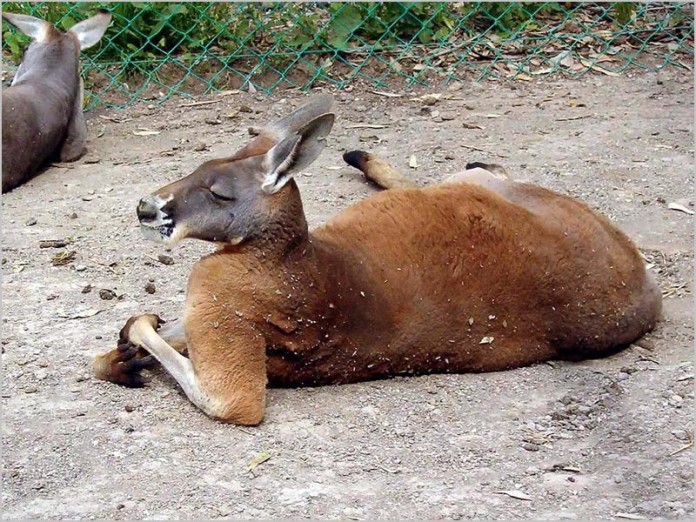
news Volvo is developing a unique system that uses radar and camera technology to detect kangaroos, in order to avoid collisions with the animals, one of the most common causes of traffic collisions in Australia.
Martin Magnusson, Senior Safety Engineer at Volvo Cars said in a statement: “Kangaroos are very unpredictable animals and difficult to avoid, but we are confident we can refine our technology to detect them and avoid collisions on the highway.” Through this technology, kangaroos are detected and brakes are automatically applied. Volvo Cars has collected data that will help create first ever kangaroo detection and collision avoidance system.
This technology has been derived from the City Safety feature which detects cars, cyclists and pedestrians both during the day and night. The road ahead is scanned by a radar sensor in the grille that detects moving objects like animals, cars, cyclists and pedestrians.
A very advanced light-sensitive, high-resolution camera in the windscreen works in harmony with the radar to detect which way the object is moving and help the computer decide what action to take. When the object is detected, it takes 0.05 seconds for the computer system to react on the situation. This can be compared with the human reaction time of about 1.2 seconds.
According to the National Roads & Motorists’ Association (NRMA), there are over 20,000 kangaroo strikes on Australian roads each year costing over $75 million in insurance claims. Human lives lost and injuries caused due to this are difficult to calculate. Hence, a team of Volvo Cars safety experts travelled to the Australian Capital Territory recently to film and study the roadside behaviour of kangaroos in their natural habitat.
“In Sweden we have done research involving larger, slower moving animals like moose, reindeer and cows which are a serious threat on our roads. Kangaroos are smaller than these animals and their behaviour is more erratic. This is why it’s important that we test and calibrate our technology on real kangaroos in their natural environment,” said Magnusson. He added: “The Volvo Cars City Safety technology is a true state-of-the-art technology, because the brakes can be primed in milliseconds – much faster than a human reacts.”
Volvo Cars’ vision that no one is killed or seriously injured in a new Volvo car by 2020, inspired this project. Magnusson said: “Whereas Volvo Cars’ Pedestrian Detection technology is geared towards city driving, our kangaroo detection research is focusing on highway speed situations. This type of technology is not designed to take responsibility away from drivers. If the driver is inattentive the car will warn him or her and eventually intervene with hard braking to avoid a potential collision.”
Volvo Cars is conducting its kangaroo detection research this week at Tidbinbilla Nature Reserve near Canberra, which is supposed to be a hotspot for kangaroo collisions in Australia. “We are only at the beginning of what is possible,” said Magnusson.
Image credit: Anat El Hashahar

In related news, VW continues testing of it’s emission testing avoidance-avoidance software.
On country roads at night kangaroos can be extremely difficult to spot. They sit stationary in long grass or a ditch within a couple of meters of the road, and then jump out just as the car goes past. Volvos system will be better than nothing, but the only real solution is to drive slowly.
Most of those 20000 kangaroos are hit by trucks that have a solid bullbar. They don’t bother trying to avoid kangaroos at all. Even a normal car does a very good job of protecting the occupants in the event of a high speed collision with a kangaroo (although you can easily write the car and kangaroo off).
I was going to ask when VW might license this for avoidance of the EPA. :)
Anything that improves the safety for the occupants, and that can also reduce ‘roo deaths, is a good thing.
Surely a more interesting case for such technology is for trucks, buses [ Firefly etc] that travel regularly at breakneck speeds, often at night, through Kangaroo country.
Skippy is very happy to see this technology succeed. Skippy is sick of being the pancaked bush kangaroo. Skippy is your friend straight and true.
I’m guessing the 20,000 strikes is taken from Insurance claims. The actual number of strikes would be much higher than that.
It sounds like a great idea (and probably is) but it’ll add a zero on to the cost of replacing a windscreen unless they have some way of mounting/installing it so it’s not part of the windscreen.
avoiding pedestrians might be useful too.
Comments are closed.